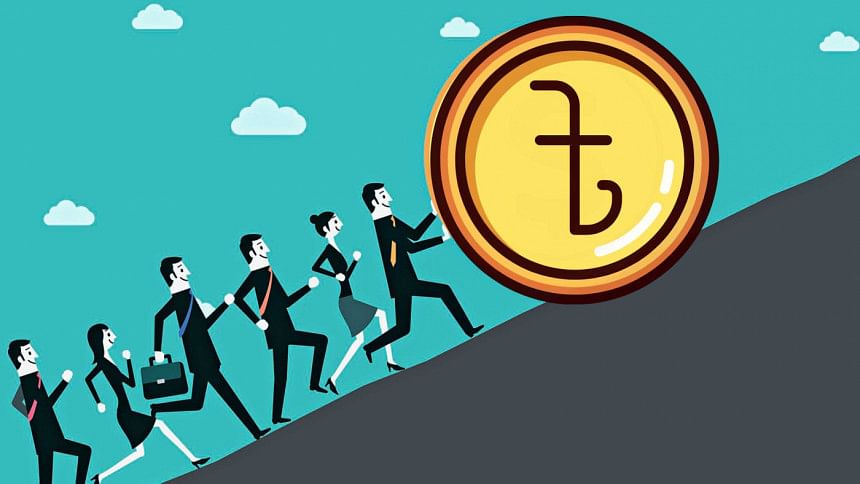Can rising interest rates really tame inflation?

Russia's military attack on Ukraine has unquestionably thrown the global economy off balance. Newspapers are full of stories about the long-term impact of this war. Obviously, I share many of the dire predictions being made, but for this article, I choose to address another equally burning and long-term issue: the role of rising interest rates. In simple terms, it revolves around the question: "How high does the interest rate have to rise to dampen inflation?"
We know that the interest rate determines the price of holding or loaning money. Banks pay an interest rate on savings to attract depositors. Banks also receive an interest rate for money loaned from their deposits. When interest rates are low, individuals and businesses tend to borrow more from banks, thereby increasing the money supply. As a consequence, inflation goes up. On the other hand, higher interest rates tend to lower inflation.
While this is a very simplified version of the relationship, it highlights why interest rates and inflation tend to be inversely correlated.
There is growing concern among economists that the rate of interest that borrowers pay is soon going to shoot through the roof and short-circuit the post-pandemic economic recovery. So, why is the interest rate going up? How does it affect other macroeconomic variables, particularly the price level? Can rising interest rates really curb inflation? I cannot answer all these questions here due to space limitations, but hope to pique the interest of readers so as to enable them to pursue the riddle in greater depth over time.
A central bank can use interest rate variations as a tool to battle inflation. It does so by setting the short-term borrowing rate for commercial banks—known as the repo rate in Bangladesh—and then those banks pass it along to consumers and businesses. That rate influences everything from interest on credit cards to mortgages and car loans, making borrowing more expensive. On the flip side, it also boosts rates on savings and certificates of deposit (CD), and encourages savings.
During a period of inflation, a central bank aims to make borrowing more expensive so that consumers hold off on purchases, thereby cooling off demand and keeping prices in check. The biggest challenge is to find the right level so as not to raise it too much which will choke off investment and hurt the poor.
As we now see, interest rates in countries all across the globe are going up after a lull in recent years. The Bank of England has begun raising interest rates from their all-time pandemic low, and is under increasing pressure to raise the bank rate again. The US Federal Reserve is expected to begin raising the benchmark rate, known as the Funds Rate, at the next meeting of the Board of Governors on March 15-16. The European Common Bank might raise rates selectively, and it is a foregone conclusion that countries in Asia will follow suit, although there might be a slight lag.
What's new about this upward trend is that many central banks in North America and Europe had brought down their respective interest rates to near-zero levels in an effort to achieve the targets of maximum employment and price stability. Unfortunately, inflation has recently reached a high level in the wake of rising demand and supply chain bottlenecks. The central banks have now decided to apply the brakes on aggregate demand and money supply to dampen inflationary pressures.
The critical question here is whether the observed movement in the two variables—interest rate and inflation—exhibit any causality, or is it merely a coincidence? Of immediate relevance is the question: Will merely raising the interest rate bring down the rate of inflation? In addition, how high and how fast does the interest rate have to rise to make an impact on inflation? For instance, if needed, can the Fed raise interest rates to 5 percent, 10 percent, or as in the 1980s, to 20 percent? Is this even calculable or predictable in advance? The answer to these questions is no.
Raghuram Rajan, former chief economist at IMF and governor of the Reserve Bank of India, dismissed interest rate as a "blunt" tool in a situation where the real culprit is the creaky supply chain. Interest rate is a blunt tool also because aggregate price indices alone don't tell us specifically which prices are changing, for what reasons, or to what effect.
"The government should take action to protect the poorest through stronger price caps and direct financial support, while increasing investment in green projects to end our exposure to volatile fossil fuel prices, and dampening demand among those who can afford it through wealth taxes," Rajan adds.
Of course, it will take some time for any action a central bank takes to impact the economy and curb inflation. That's why the policy-making groups need to carefully watch economic data to decide how much and how frequently to raise rates.
And the biggest challenge is to find the optimal level of interest rate increases without pushing the economy into a slump. Treating inflation is like treating cancer with chemotherapy, as an expert said. "You have to kill parts of the economy to slow things down. It's not a pleasant treatment."
Dr. Abdullah Shibli is Senior Research Fellow at the US-based International Sustainable Development Institute (ISDI).

 For all latest news, follow The Daily Star's Google News channel.
For all latest news, follow The Daily Star's Google News channel. 



Comments